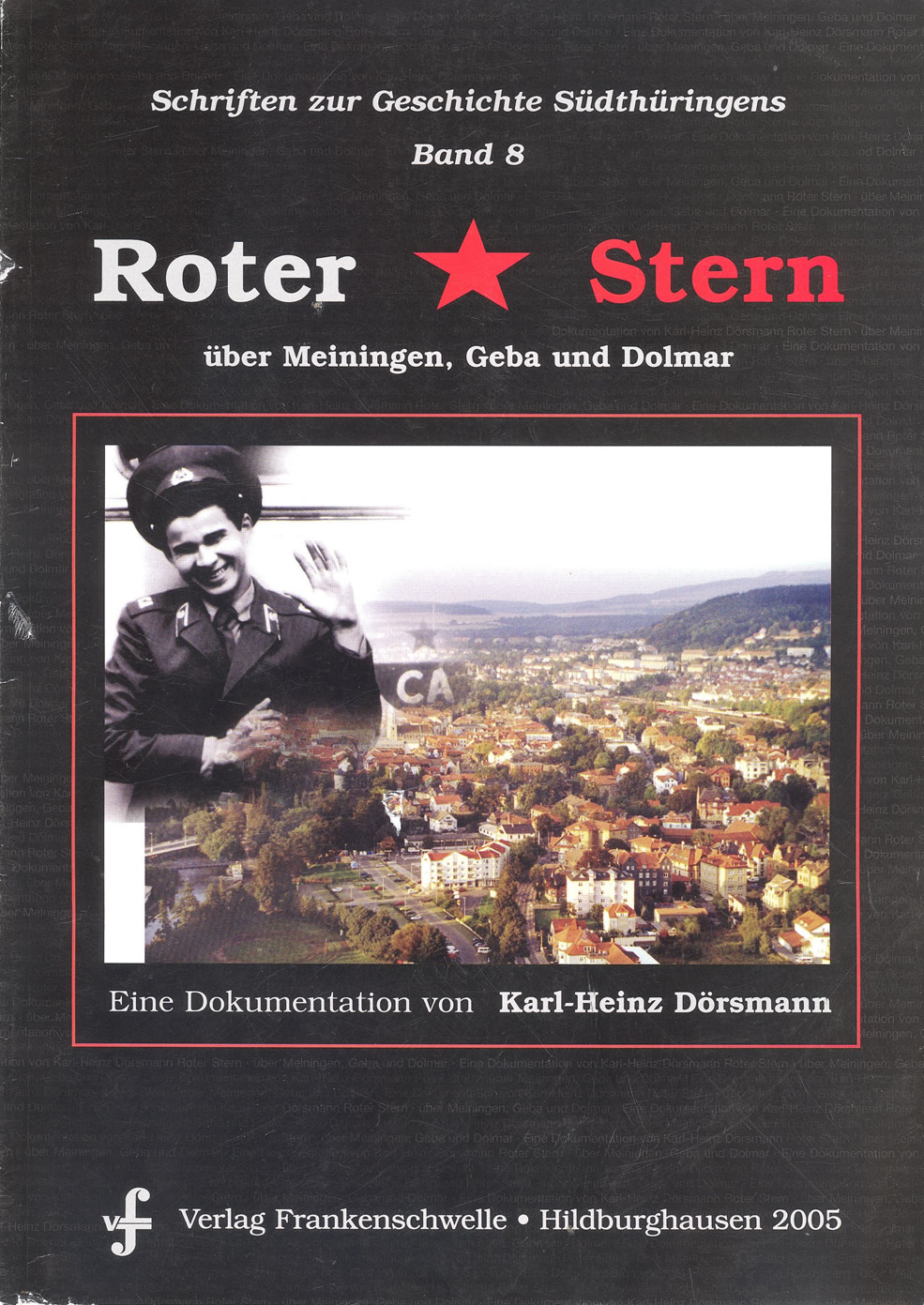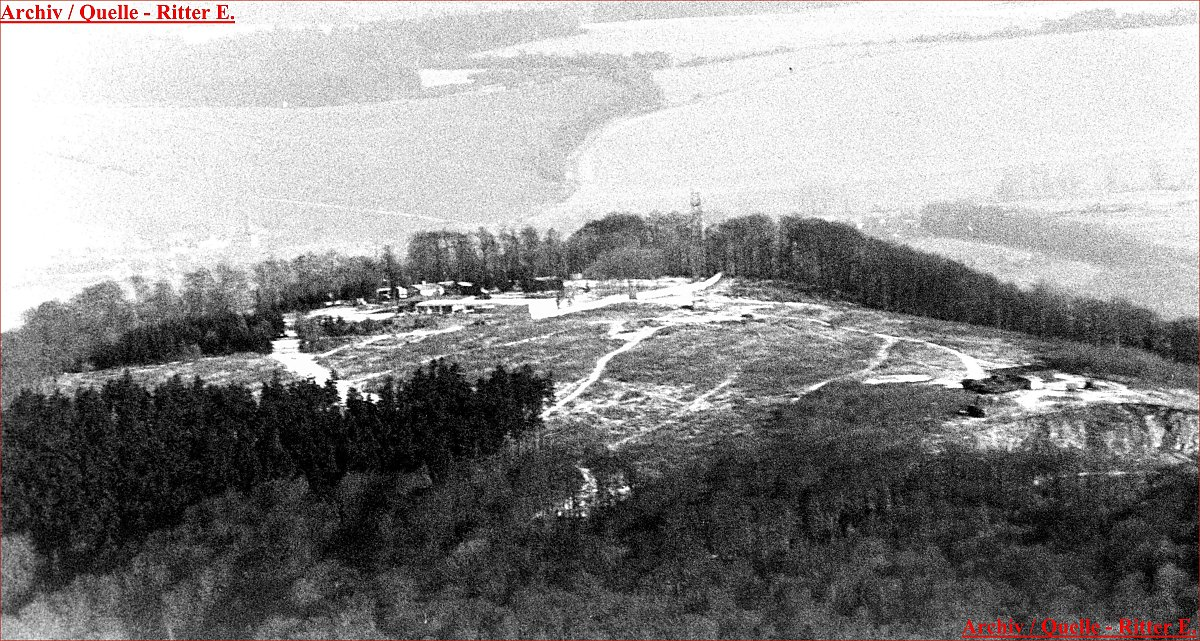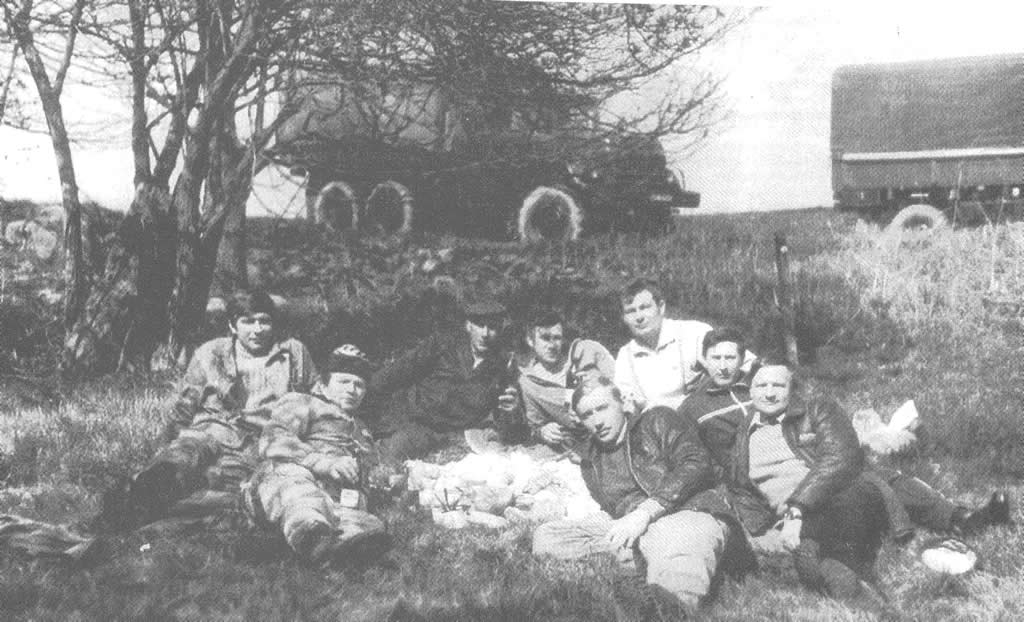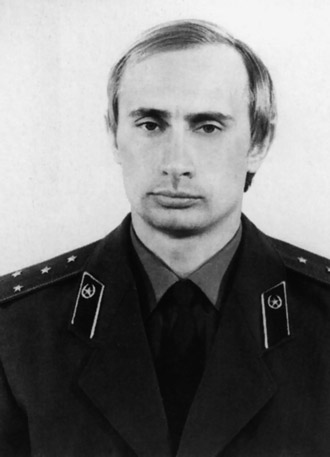The Silent Man on the Distant Hill
In the book Roter Stern uber Meiningen, Geba und Dolmar,
Karl - Heinz Dorsmann, a resident of Meiningen and
historian, tells the story of when the Russian army was a
significant presence in the town and surrounding area. In
German and lavishly illustrated with then and now photos,
maps and diagrams, the book recalls the training areas,
barracks and buildings associated with the home stationed
motorized rifle regiment and supporting units. This garrison
was in fact, the closest to the border Warsaw Pact combat
unit outside of Berlin. Troopers may recall being at OP
Sierra / Tennessee and on particularly cold and clear
nights, being able to see Russian armored vehicles
conducting live fire exercises at their local training area
at Dolmar. Yes - they were that close.
Additionally, the book includes stories and photos that
illustrate something of the life these far from home
Russians experienced in Germany. In this section is an
interesting anecdote and photograph related to Vladimir
Putin, the long time strongman in Russia currently enjoying
his third term as President.
| |
 |
|
| |
Karl - Heinz
Dorsmann's excellent history of the Soviet presence in Meiningen and
surrounding area |
|
A series of negotiations starting in the late 1940s provided
the basic framework governing which military forces could be
where and doing what within the 5 kilometer zone leading to
the border. Basically, both the Russian and East German
military were barred from their near border area and, in the
Federal Republic, the West German military was similarly
prohibited. The one major exception was the US Army that was
granted patrol privileges along the border in the American
sector of Germany and Berlin.
This is not to say, however, that the Russian military did
not take an interest in the border. While the administration
of the barrier system was an East German affair, if a NATO -
Warsaw Pact war were to break out, certainly the border
areas would be the scene of the first fighting. Hence,
Soviet observation bunkers were scattered all along the
German border area and in the Eaglehorse sector there were
three, near the East German towns of Melpers,
Schwickertshausen and Gompertshausen. Who knows how many
Russian officers walked the near border area in either
civilian clothes or dressed as East German workmen and this
brings us back to the book Red Star Over Meiningen.
It was well known that the area of
Gross Gleichberg and Klein Gleichberg, two large wooded
hills in otherwise rolling and open farmland, just outside
of the 5 K zone in East Germany, was a Soviet military area.
On top of the larger of the two hills was a Soviet radio
intercept station. This was adjacent to the Eaglehorse
border patrol sector. To get your bearings, the West German
towns you might recall were Irmelshausen and Rothausen; Bad
Konigshofen would be about six kilometers to your southwest.
At the foot of the Gleichbergs lay the German town of
Romhild and moving southwest, towards the actual border
fence lay the East German village of Mendhausen, one of
those notorious places that seemed to have little or no
traffic; the town lights came on and went off in unison.
| |
 |
|
| |
Soviet radio
intercept site on Gross Gleichberg, just outside of the 5 K zone. |
|
On this Google map, the actual border between East and
West Germany was along the old state borders of Bavaria and
Thuringia and it is displayed as a white dashed line.
Dorsmann reports that the Gleichbergs had a duel use, both
military intercept site and also as an ad hoc Soviet hunting
preserve.
Seated in a group with Russian
military trucks to the rear is a figure out on such a hunt
who bears a very strong resemblance to a young Vladimir
Putin. Dorsmann dates the photograph to 1980 and cites
modern discussions with the then East German hunting guide
who recalled the event and location as that Gleichberg -
Romhild area. The prey were reh deer. There may be some
confusion over the dates.
| |
 |
|
| |
Near to camera,
second from right, Putin relaxes with hunting friends on a trip to
the Romhild / Gleichberg area. |
|
In 1980, young Lieutenant Putin, KGB officer in the counter
intelligence office, was stationed at Lenningrad; not
exactly East Germany but perhaps he had an opportunity to
travel. By 1985, however, Major Putin was stationed in
Dresden, East Germany in a similar position and very well
may have gone on a hunting trip to the near border area. One
cannot imagine that he did not find a way to take a long
look at the West, perhaps a BGS or Eaglehorse patrol rolled
by in the distance.
Putin was notorious for usually being bored with his KGB
assignments and very good at figuring out how to get to
interesting places. In 1985, he stares blankly at the camera
near Gleichberg, fifteen years later, he was the President
of Russia.
| |
 |
|
| |
Putin as a Major in
the mid 1980s while stationed at Dresden. |
|
Thanks to Erwin Ritter for use of the Gross Gleichberg
intercept station photo and thanks to Karl Dorsmann for his
research and use of the Putin hunting party image.
September 2012